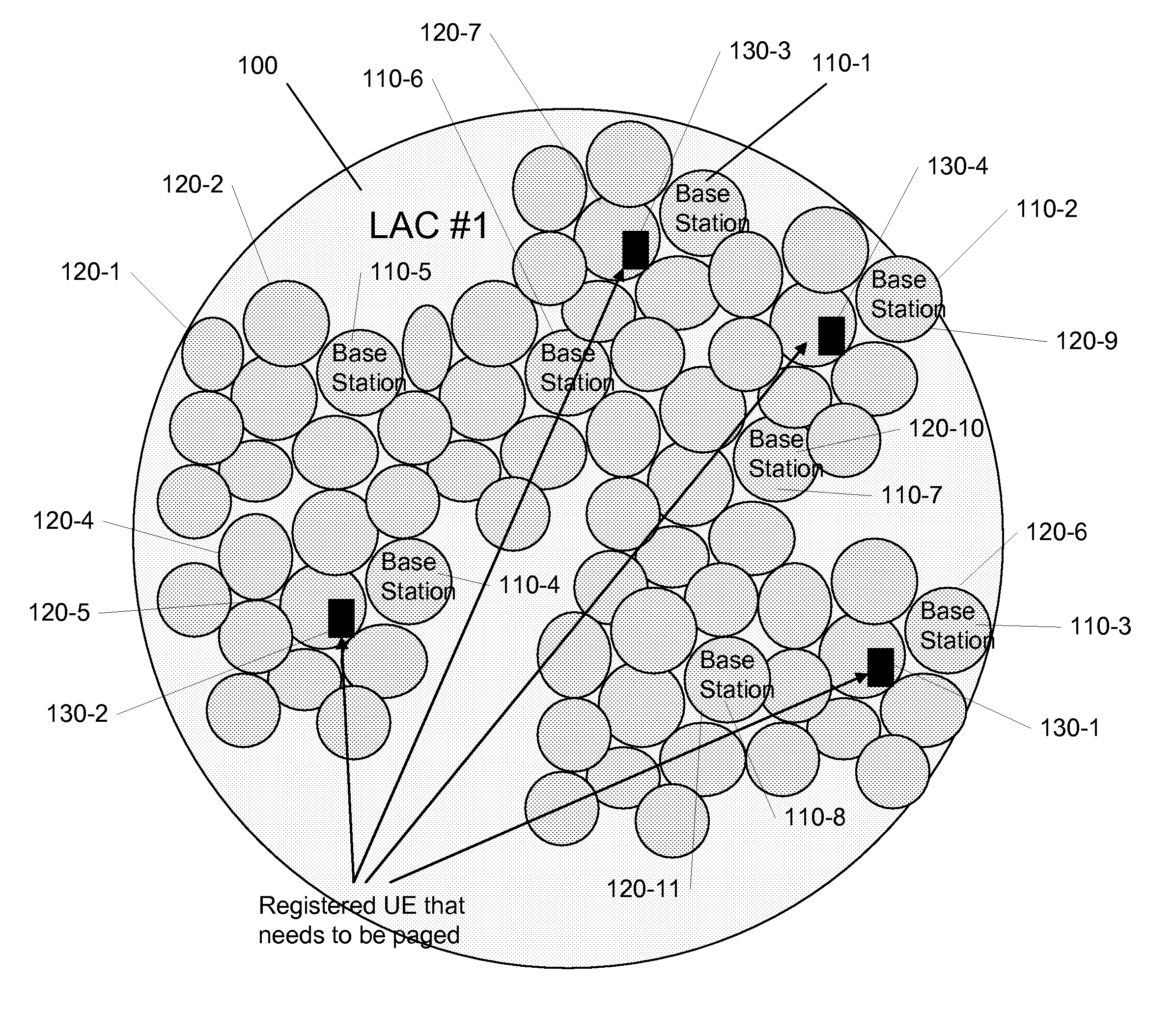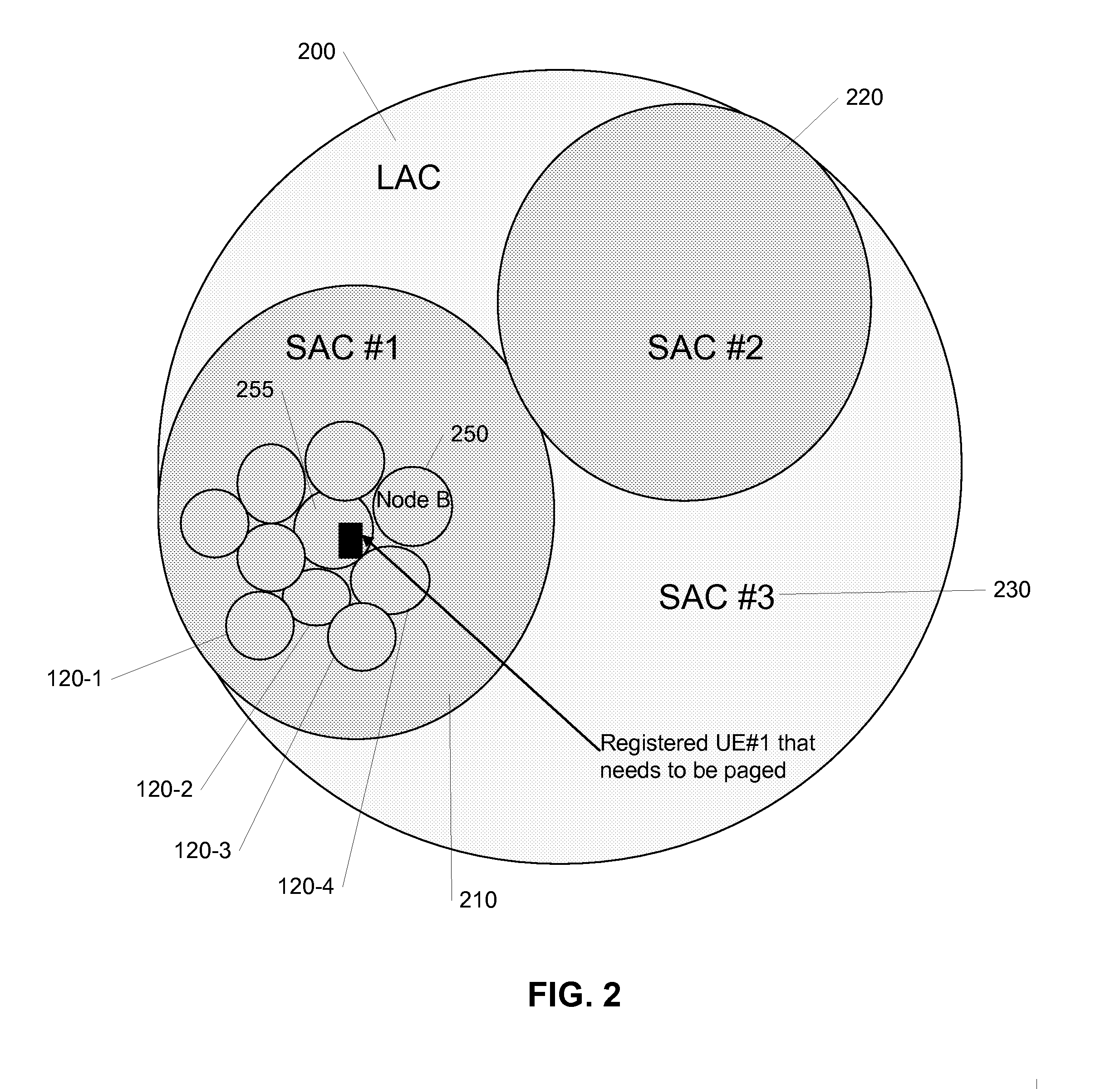Mobile registration using a service area identifier or plurality of service area identifiers
a technology of service area identifier and mobile registration, applied in the field of mobile telecommunications systems, can solve the problems of unnecessarily paging ue that is not in their reach, more power and codes consumed, and the inability of mobile devices (ue) to provide their current location area codes, so as to reduce the congestion associated with paging a location area cod
- Summary
- Abstract
- Description
- Claims
- Application Information
AI Technical Summary
Benefits of technology
Problems solved by technology
Method used
Image
Examples
Embodiment Construction
[0029]FIG. 2 represents the circular representation of a location area code, LAC#1100 of FIG. 1, further defining at least one service area code of which three are shown by way of example 210, 220, 230. As described above, a location area code 100 does not represent a circular area but may be the area covered by the United States of America (typically, not larger than a country) depending on the extent of area service coverage of a given wireless service provider in that country or other country or portion of a country or several countries. It may not be contiguous, for example, a LAC 100 may have zones of no coverage and islands of coverage outside a zone such as Alaska or Hawaii lying outside the United States but within the same LAC.
[0030]The first digit of a reference numeral as used herein represents the first figure in which a depicted element first appears. Consequently, for example, service area codes 210, 220 and 230 are first introduced in FIG. 2 and so each begin with a 2...
PUM
 Login to View More
Login to View More Abstract
Description
Claims
Application Information
 Login to View More
Login to View More - R&D
- Intellectual Property
- Life Sciences
- Materials
- Tech Scout
- Unparalleled Data Quality
- Higher Quality Content
- 60% Fewer Hallucinations
Browse by: Latest US Patents, China's latest patents, Technical Efficacy Thesaurus, Application Domain, Technology Topic, Popular Technical Reports.
© 2025 PatSnap. All rights reserved.Legal|Privacy policy|Modern Slavery Act Transparency Statement|Sitemap|About US| Contact US: help@patsnap.com



